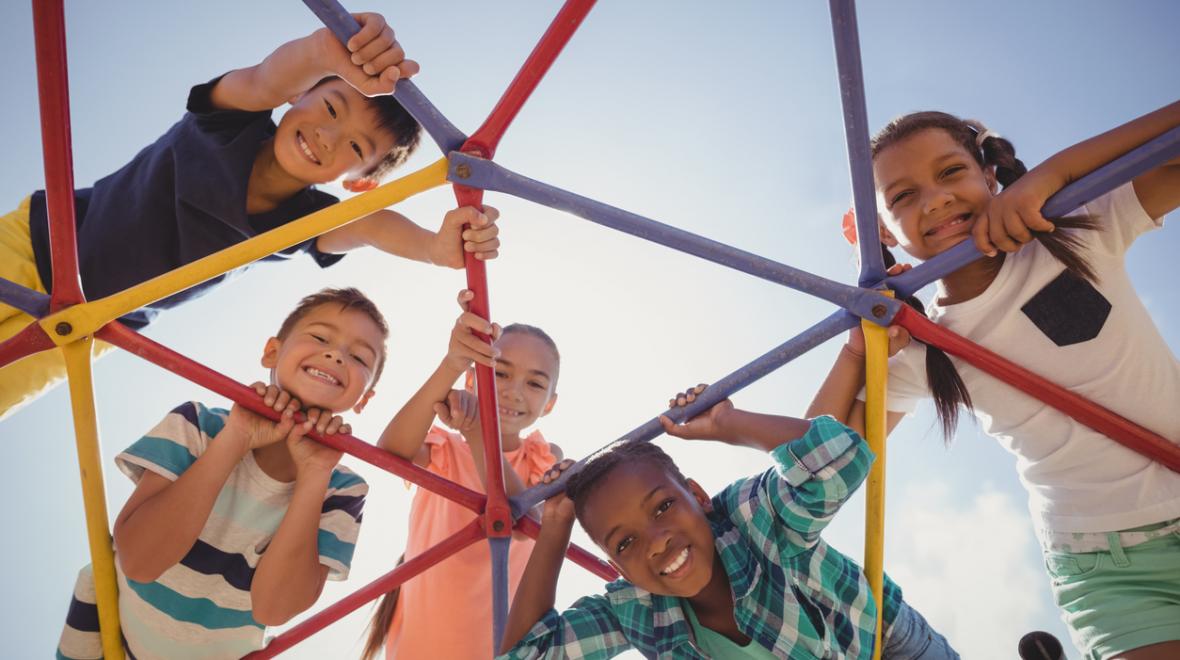
My son is an energetic, wiggly, chatty kindergartner. Most weekends, the first thing he does if we’re home is pull out his bike or scooter and zoom off, usually singing at the top of his lungs. He loves to swing back and forth across the monkey bars and to scale the climbing ropes at every park we frequent, yammering away with friends as they swing past each other. And when we’re in the car within the bounds of our neighborhood, he often asks me to drop him off down the street, at the bottom of a steep hill, just so he can sprint to the top for "fun." He’s just got so much energy to burn. His body, his mind and his mouth are always moving a mile a minute.
In other words, he’s a normal 6-year-old boy.
Which is why I was not surprised recently to get an email from his teacher saying that he’d been especially silly, chatty and wiggly in class lately. It’s not easy for him, or any child, to sit still for the majority of a nearly seven-hour school day with few opportunities for movement, play or free time.
Play isn’t a break from ‘real’ learning, play is learning. Recess is the time kids are learning the most valuable lessons of the day.
As a consequence for disrupting the class, starting on the first day he’d displayed these behaviors, his teacher decided to keep him in during recess. He’d already missed a few by the time she contacted me. Teachers have a tough job, so I usually don’t have a problem with them using different disciplinary approaches (even when they differ from my own) to keep my kids’ behavior manageable in the classroom.
But I DO have a problem with taking away a kid’s recess.
Kids are playing less.
American grade-schoolers’ outdoor and unstructured playtime today is woefully inadequate as it is — at school and at home. In a 2010 study, families reported children got just half an hour of free time a day, an average of 35 percent less unstructured outdoor playtime hours than just 20 years ago. And the figures have only grown more dismal with the rise in time spent on devices. Some experts believe that the change could even be responsible, at least in part, for the steep rise in anxiety, depression and suicide rates among children in the past decade.
The fight for longer lunch and recess times is not new. Removing recess as a disciplinary measure has been banned in a growing number of states nationwide. And here in Seattle, outdoor schools are on the rise. Local activist groups like Lunch and Recess Matters have been fighting to increase kids’ playtime since 2014, when a reduction in school lunch and recess time at many local schools caused an outcry from parents and teachers.
Despite the growing movement, there’s still work to do. The state of things at my own kids’ schoolyard and other public school playgrounds across the state is still inadequate. Primary grade students at my kids’ school get just one hour of their school day devoted to outdoor play with all of their recesses combined. By fifth grade, that’s reduced to just the state-mandated minimum of 45 minutes. And some Seattle-area schools still report just 30 minutes of the day are dedicated to recess, with kids at struggling schools logging the least unstructured outdoor playtime.
All work and no play.
All this while the pressure to perform academically and the anxiety that comes with it continue to mount for even the youngest grade-schoolers. Kids in kindergarten in the United States today spend an average of three hours a day in instructional time for math and reading. Kindergartners now log significantly less choice and center time. School time for even the youngest learners is increasingly spent completing worksheet assignments and following teacher-led instruction, which means kids are indoors and sedentary a lot.
It’s not just that kids need a break from demanding classrooms: Taking away recess is also completely ineffective and even counterproductive as a discipline strategy. In fact, playtime is essential to setting the right conditions for calmer, more focused and more engaged learning. Unstructured outdoor play improves executive functioning, behavioral regulation, early literacy and math skills, and social development. It’s also associated with lower stress and a decrease in mental health issues later in life. So much so that pediatricians are now prescribing it for a host of children’s health issues.
Play is learning.
Play isn’t a break from "real" learning: Play is learning. With less and less play-based learning in the classroom, recess is the point in the day where school-age kids are learning the most valuable lessons of the day. On the playground, kids learn skills like communication, leadership, emotional regulation, taking turns, creativity, decision-making and more. These are the very skills most associated with college readiness and career success.
As for my kids, they are privileged to live a pretty free-range childhood. Our yard is a safe, spacious place for them to play, and they have plenty of opportunities for unstructured, outdoor free time. Yet, I’ve noticed that even small changes to their daily dose of play impacts their mood, their concentration, their behavior and their sleep schedules. It’s a reminder that recess has too many benefits to be viewed as optional. They need that time to grow, to learn and to thrive. All kids do.











